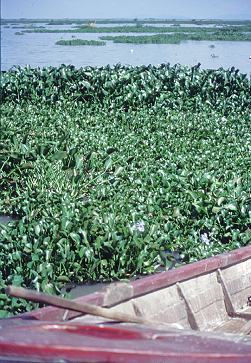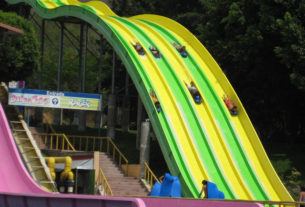Westwords

Ancient Chinese proverb say ox in ditch bad news. Really bad if your ox.
Lirio (water hyacinths) on Lake Chapala, in the colorful state of Jalisco, in this magical country called Mexico, is bad news. Because the ugly green carpet spent too much of the winter at our end of the lake, it’s really bad — or worse.
Old Japanese proverb says talk does not cook rice. Modern translation: On-going debate does little or nothing to slow the growth or discourage the spread of water hyacinths.
Relatively recent Canadian proverb, probably copied from the Romans or Greeks, says it is better to light a candle than to curse darkness. Language limitations neutralize my loud screams but I’m ready to build a bonfire.
Crisp, new Irish proverb says never fight a wolf with a flimsy stick. It is time to get serious. Machete, where art thou?
In typical Mexico fashion, the country has been going to do something about Lake Chapala’s lirio since 1994. Before that, it was just a conversational plague.
Three or four times in the past decade, a plan was in place and pesos budgeted to spray the wicked weeds with glyphosate or Diquat or some other relatively inoffensive, biodegradable herbicide. Three or four times the idea was stalled or shot down by environmentalists or the chairman of pumps and pipes for downtown Guadalajara.
As recently as last month, chemicals to fight lirio were branded as poison by our dear Amigos del Lago de Chapala. I saw their sign: “Don’t poison our lake.” Poison was in red. With foreign funding and one east-end fisherman as a front guy, the opposition managed to get a court order to again delay treatment. There were no cheers in Jocotepec.
What’s missing is a better idea for defeating lirio. Bring back the manatee? Import a pair of white Hong Kong geese to pick at the plants? How about the sap-sucking Megamelus plant hopper? Two tribes of weevils indicate a finicky appetite for water hyacinths if we have time for a hundred-year plan. Applying this technique on a large scale would require billions of imported beetles.
Red spider mites really do eat water hyacinth. Alas, they also eat corn, mango, sweet potatoes and citrus.
The mechanical counterattack keeps a lot of people and dump trucks busy but it doesn’t work. Lirio replenishes itself faster than backloaders can lift it out. Lake Chapala is the perfect setting for uncontrolled growth — warm, shallow water with lots of nutrients washed in from farms. Lirio can supposedly double in bulk in as little as 12 days.
Federal and Jalisco governments invested some 30 million pesos in the heavy machinery fight last year and didn’t make a dent. But they’re still loading and hauling.
From a distance, Lake Chapala lirio is a joke, much to do about not much, another long-range project for those with mañana mentality. One realtor, in defense of lakeside property values, marveled at the beauty of the yellow and violet lirio blooms. Yeah. Right on.
In fact, lirio is deadly. Because the prevailing winter wind comes from the east, it gathered at the west end of the lake. The plant has a high demand for oxygen and starves marine life. Thousands of fish have died. (Well, that’s what I’m told, I didn’t do a body count but the water is rancid and stinks of stagnation.) Large leaves block out sunlight for other aquatic plants, preventing photosynthesis. Learned that in high school.
In real, everyday life, lirio has inflicted great pain and suffering on the 17 fishermen who seek to earn a living in our community. They went weeks without being able to find the water, much less any surviving fish.
Lake Chapala is not alone in this affliction. Maybe a third of the inland water world is infected. Florida friends tell me their state, after years of concerted effort, has water hyacinth under “maintenance control.” Herbicides certainly aren’t perfect but they provide the cornerstone of defense. If you haven’t been there, Florida has more water, more money and bigger boats.
Even with the awesome power of border promotion and mythology, my scientific credentials are skimpy. I don’t know what to do. It would be a blessing to find a natural enemy of water hyacinth to gobble it up. Hasn’t happened, even after a generation of research, even after a daring scoop and study expedition along the Amazon.
Bug biology is serious stuff. Colonies of swimmers, flyers and crawlers have been captured and screened for which might do the most damage to water hyacinth. Careful now, be sure water hyacinth is the only plant they’ll eat.
One Ajijic resident says Lake Chapala is a cesspool. The lake is polluted but it isn’t that bad. It is certainly worth saving. It is the best lake we have in this part of Jalisco.
From our second and third-floor balconies in suburban Joco, it is our lake, especially beautiful at sunrise and sunset, with Mount Garcia as a dramatic backdrop. Ah yes, we remember it well. But we can’t see it for the lirio.
We are old. Stop the chatter. Somebody do something soon.


